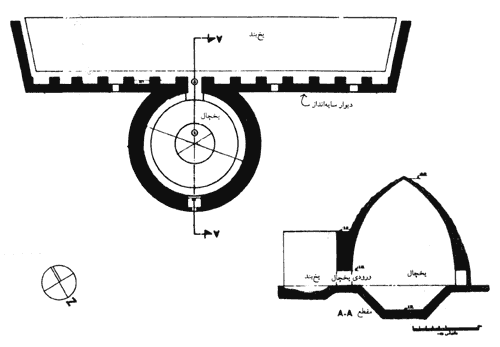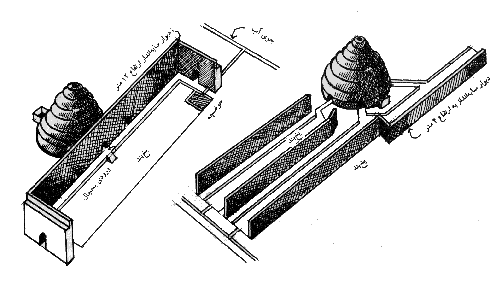La Ermita de Viguera

Photo: Sebastian Schutyser
The ermita of Viguera in La Rioja, Spain, captured here with a pin-hole camera by photographer Sebastian Schutyser, was constructed in the 13th century and contains important mural paintings within. An overhanging rock cliff protects the ancient adobe structure from the elements, which is only accessible by steep 15 minute climb from the nearest road. Schutyser writes of the ermita:
The Spanish word ermita [English: hermitage], has a similar structure and meaning in all languages derived from Latin. It always refers to an uninhabited or isolated place, a location for spiritual retreat. In Romance languages it comes from the Latin word eremus, tracing back to the Greek eremos, which means deserted. In Spain, their use has shifted throughout the centuries, but they have always been isolated sanctuaries or chapels. Hermits inhabited them in seclusion, or in other times, in small groups. Other hermitages were built by pilgrims, who tried to invoke divine protection on their journeys. Finally, some hermitages were erected for pastoral cults, or to house religious brotherhoods. At present many still have the cult of a saint celebrated in them once a year.
The photo is part of a larger photographic collection of ermitas by Schutyser, 575 Romanesque and Pre-Romanesque ermitas total, who is hoping to assemble a book from these photographs.
Hassan Fathy is The Middle East’s Father of Sustainable Architecture
Green Prophet has railed against projects like Dubai Burj Tower. They have pounded our chests at the audacity of Masdar City’s “zero” footprint claim, and have decried the potential consequences of unsustainable approaches to building and planning. “USD22 billion” for a building project and “sustainable” simply don’t belong in the same sentence.
Egyptian architect Hassan Fathy died in 1989 but left behind a legacy of 160 building projects ranging from small projects to large-scale communities complete with mosques and schools. His impact can still be felt from Egypt to Greece and even New Mexico, where in 1981 he designed the Dar Ar-Salam community. Fathy received several awards for his work, including the Aga Khan Award for Architecture in 1980, and founded The International Institute for Appropriate Technology in 1977.
Mud Bricks Made With Wool
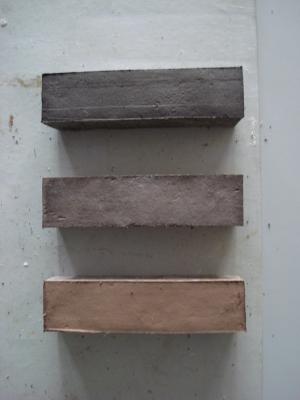
Bricks made with wool. (Credit: Galán-Marín et al.)
Spanish and Scottish researchers have added wool fibres to the clay material used to make bricks and combined these with an alginate, a natural polymer extracted from seaweed. The result is bricks that are stronger and more environmentally-friendly, according to the study published recently in the journal Construction and Building Materials.
Adobe Homes for All Climates
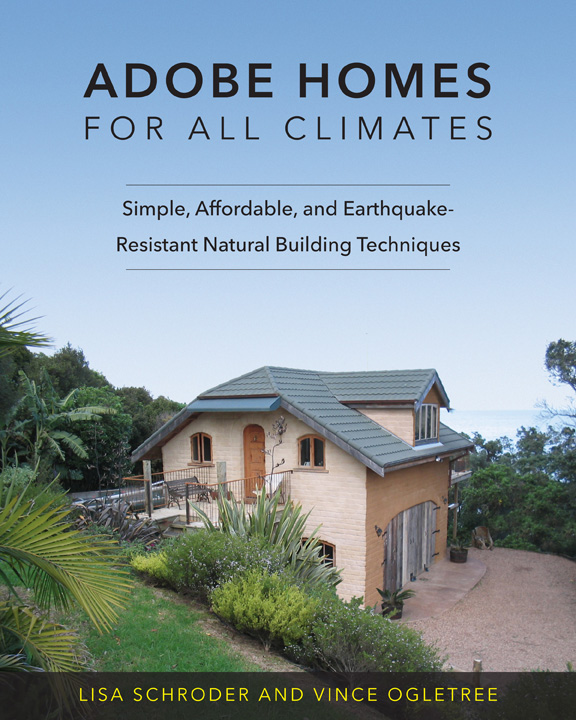
Adobe Homes for All Climates: Simple, Affordable, and Earthquake-Resistant Natural Building Techniques, by Lisa Schroder and Vince Ogletree, is ideal both for first-time do-it-yourselfers and for experienced adobe builders seeking to improve their craft. Drawing on the experience of more than fifty major adobe projects since 1993, Adobe Homes for All Climates describes Adobe Building Systems’ patented reinforcement and scaffolding systems, showing readers how to construct adobe homes more easily and safely, and with superior strength, durability, structural integrity, and aesthetic appeal, as compared to earthen homes of the past.
Computer Modeling to Build Better Mud Bricks
Rammed earth and stabilized mud block or brick are cheap, easy to make, usually durable materials widely used for building homes and low-level structures, especially in developing countries. Despite their widespread use and long history, the structural properties of these materials are not well understood, so how they could be manufactured to better withstand destructive natural forces, such as earthquakes and weathering, remains a goal. Craig Foster, assistant professor of civil and materials engineering at the University of Illinois at Chicago, hopes a specially tailored set of computer models he is developing may provide the necessary answers. He has just won a three-year, $243,000 National Science Foundation grant to conduct the work.
MUMEMO
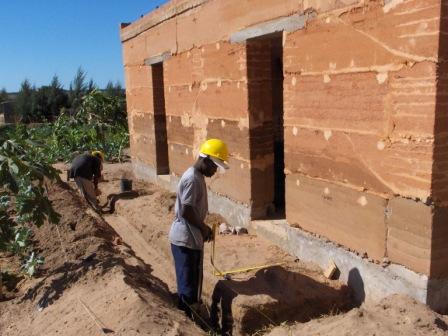
Mumemo is a blog about a training course carried out in Mumemo (Maputo, Mozambique) on earth construction by two Portuguese architects, Miguel Mendes and Teresa Beirao, during May and August 2006. The project was created for the inhabitants of a new village, created as a resettlement for the victims of the massive floods in the year 2000. The course gave students a wide and solid knowledge about earthen construction and three main techniques (rammed earth, adobe, compressed earth blocs) as well as provided them with the ability to direct similar courses in other communities. During the course, a small 50m2 house was built.
Yakhchal: Ancient Refrigerators

Yakhchal in Yazd Province
By 400 BC, Persian engineers had mastered the technique of storing ice in the middle of summer in the desert. The ice was brought in during the winters from nearby mountains in bulk amounts, and stored in a Yakhchal, or ice-pit. These ancient refrigerators were used primarily to store ice for use in the summer, as well as for food storage, in the hot, dry desert climate of Iran. The ice was also used to chill treats for royalty during hot summer days and to make faloodeh, the traditional Persian frozen dessert.
Aboveground, the structure is comprised of a large mud brick dome, often rising as tall as 60 feet tall. Below are large underground spaces, up to 5000m³, with a deep storage space. The space often had access to a Qanat, or wind catchand often contained a system of windcatchers that could easily bring temperatures inside the space down to frigid levels in summer days.

NimVar Yakhchal
The Yakhchal have thick mud brick walls that are up to two meters thick at the base, made out of a special mortar called s?rooj, composed of sand, clay, egg whites, lime, goat hair, and ash in specific proportions, and which was resistant to heat transfer. This mixture was thought to be completely water impenetrable.
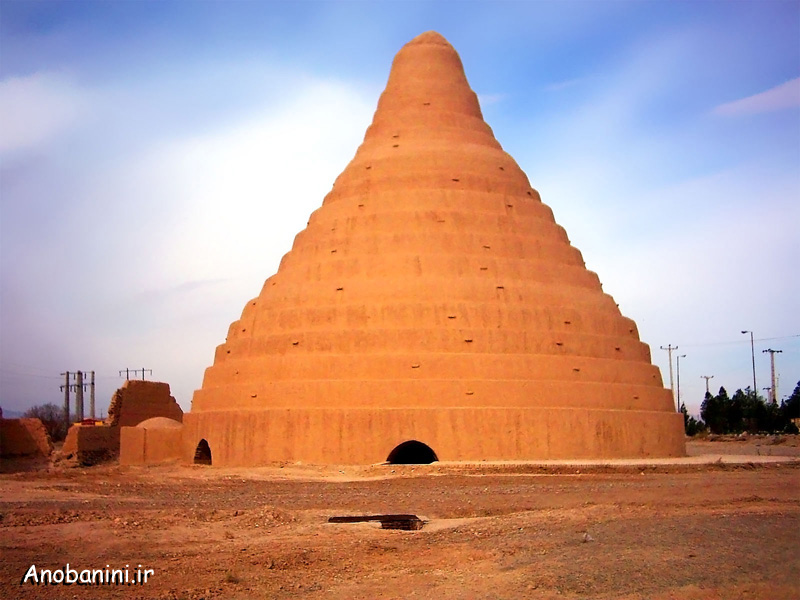
Meraji Yakhchal
The massive insulation and the continuous cooling waters that spiral down its side keep the ice stored there in winter frozen throughout the summer. These ice houses used in desert towns from antiquity have a trench at the bottom to catch what water does melt from the ice and allow it to refreeze during the cold desert nights. The ice is broken up and moved to caverns deep in the ground. As more water runs into the trench the process is repeated.
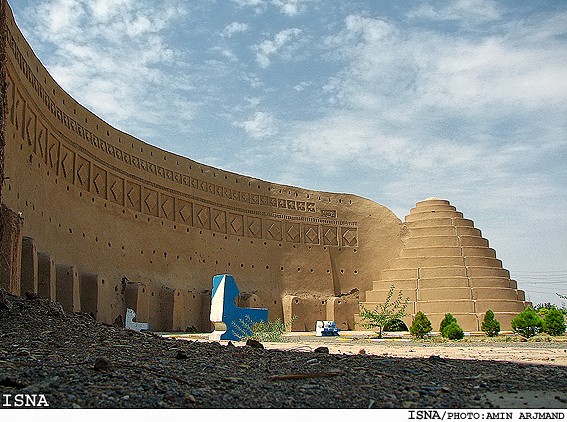
The twin ice-pits on Sirjan, Kerman Province, are surrounded by high walls and were constructed 108 years ago with mud-brick, the ice-pits are surrounded by high walls.
Earthquake Proofing Traditional Peruvian Houses
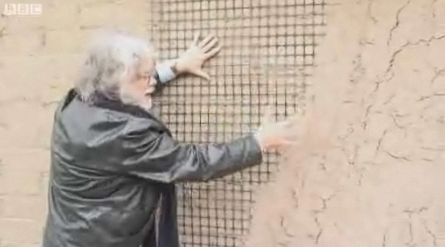
Since 1970, Peru has been hit by five powerful and deadly earthquakes. The latest struck Peru’s coast exactly two years ago with a magnitude of 8.0 on the Richter scale. It fiercely shook the capital Lima, but its devastating epicentre was about 200km (124 miles) to the south, near the town of Pisco, a small fishing port built largely of adobe – mud bricks which Peruvians have used for thousands of years. For Peruvian engineer Marcial Blondet, it was the devastating quake in 1970 that first motivated him to develop earthquake-resistant buildings, particularly for those who could least afford them. Mr Blondet and his team found a solution in an industrial plastic mesh used by mining companies to hold back earth on slopes. It is strong, cheap and easy to use. Securely enveloping a normal mud-brick home in the mesh can prevent the walls from collapsing in an earthquake. The building wobbles but it does not fall down.
Last Chance to See Kashgar

Bulldozers are to raze the mesmerising mud brick old town in the Chinese Silk Road city of Kashgar. Visit soon before its vibrant street culture is lost, or better, help save Kashgar.

